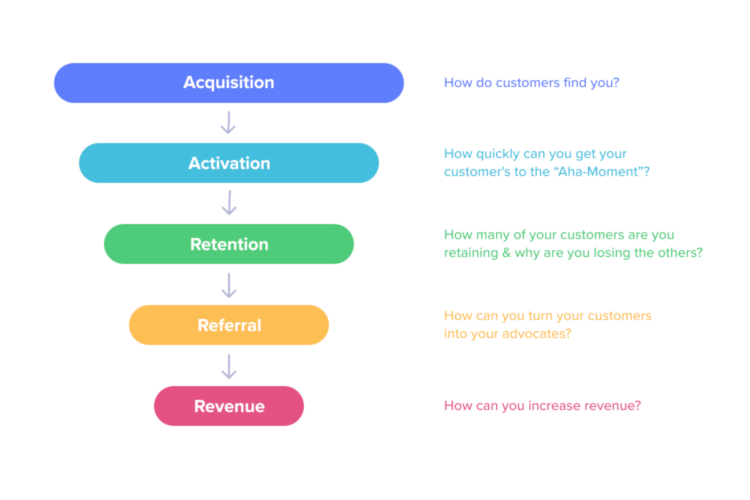By now you are overwhelmed by the daily volume of blog post notifications, newsletters, and relentless social posts on LinkedIn and Twitter.
A daily tsunami of content marketing fills our inboxes powered by platforms automating: cold-email, drip email and newsletters. Product-led companies use email as low-hanging fruit. The problem is as McLuhan said: “the medium is the message“*.
Your Content Marketing competes for your user’s inbox attention along with: other SaaS/App/PLG products, marketing companies, e-commerce platforms and plain-old-spammers. I’ve even noticed one smart startup only emails on Saturday (no weekend rest for you dear reader!)
Your Content Marketing might be well-targeted, but McLuhan tells us the user will just see it as more junk mail. Add to that floods of App push notifications, social media posts, PR strategies, inbound marketing etc.
The user is fatigued.
Content marketing** in an internet (SaaS/Mobile App) product was popularised by one of the most successful SaaS companies, HubSpot.
A Brief Description of HubSpot
The only problem is:
- a) not all leads are qualified
- b) the granularity of audience segmentation is rarely nuanced.
- c) it often has no way to update based on a user’s journey. (similar to when you still see ads after you bought a product!)
From Content to Context
Product Led Growth is about making your software at the center of the users happiness (and buying) journey.
Context marketing is the conscious recognition of the 80:20 rule:
- a) new user acquisition is costly – 80%
- b) existing user retention (if you have a product that solves the user’s JTBD) costs 20%. Retention is the most effective spend you can make.
- c) your App is a Context marketing platform.
Like Content Marketing, we aim to help and educate the user – but with Context:
- a) Your UX and the customers data
- b) the timing of the user journey is available to you.
Being contextual is critical when it comes to user journey and experience. The key point here is to be there for the right person, at the right time, in order to deliver the right content.
Product-led companies should deliver (or allow self-service) targeted helpful InApp content to their users; then user engagement deepens and user happiness increases.
Tools, such as Contextual, can simplify parts of the user journey: such as onboarding or feedback. User journey data also helps with identify the best time to trigger availability of specific and unique content based on the user experience.

The Importance of Context Marketing
Context matters. But why?
Because of the 80:20 rule discussed earlier, we argue that Product Managers and inApp Growth teams are significantly better contributors to company revenue than acquisition personnel!

As mentioned earlier, timing is one of the defining elements of context marketing. With proper timing, product-led companies can easily deliver useful, helpful content that adds to the user experience and boosts user engagement.
But there are other reasons why context is important.
Let’s consider Dave McClure’s AARRR! Pirate Metrics through the lens of content and context marketing. McClure’s Pirate Metric is a simple tool created to help with product and business growth by analyzing five concepts, as follows:
- Acquisition
- Activation
- Retention
- Referral
- Revenue
The five parts of this model each represent a tactic that, once focused on, can help with product adoption and user retention.
Does Context Matter?
Based on this model, content marketing responds to Acquisition. Content (or inbound) represents the channel through which potential users get to know your product and your company. They might hear about you through SEO, social media, content creators, and so on. However, this step alone might not be enough to get to Activation, no matter how diversified your content marketing is.
To get to the next step, you need context. Activation is about a potential user familiarizing themselves with your app or product. For this, you need to be more specific with your marketing by finding a niche that resonates with the potential client. Optimization leads to product adoption and to Retention.
Just like Activation, according to the Pirate Metrics, Retention is also context-dependent. Through context marketing, customers can better understand the benefits your app brings to their workflow and their life. At this stage, the key focus for product-led companies should be reducing user churn by optimizing the content each user sees, be that through email or in-app notifications. Style the content to the user’s needs to make them feel heard and validate their needs.
Referral represents the likelihood of your users sharing their thoughts about your product with their friends. Think of it as the equivalent of the NPS survey’s question: “How likely are you to recommend this product to a friend?” Happy users lead to more referrals. How to make your users happy? Pay attention to context.
Revenue is the sum of the success of the previous four concepts. It grows exponentially with each happy user.
We can see that the majority of these concepts are greatly influenced by context marketing vs. content marketing. Optimizing your marketing strategy to be useful and helpful for your users results in happier people who are more likely to go through with product adoption and spread the word about your app.
It’s Time to Focus on Context Marketing
But how do you do that, you might wonder. That’s simple. Use Contextu.al!
An easy-to-use and helpful platform such as ours can simplify your life when it comes to context marketing. As our name suggests, we are all about context.
Contextu.al knows your users and helps them in their user journey to product adoption and retention by putting the most contextual content in front of them. With us, you can also measure the uplift or increased engagement by the user, to know if we helped them!
To get the best tips, notifications, and guides for your users, book a demo with us today at contextu.al!
* The irony is not lost on us that some readers will have seen this from an email newsletter.
** Benjamin Franklin is apparently the first content marketer when he published “Poor Richard’s Almanack”
*** Banner image credit: freepik.com





